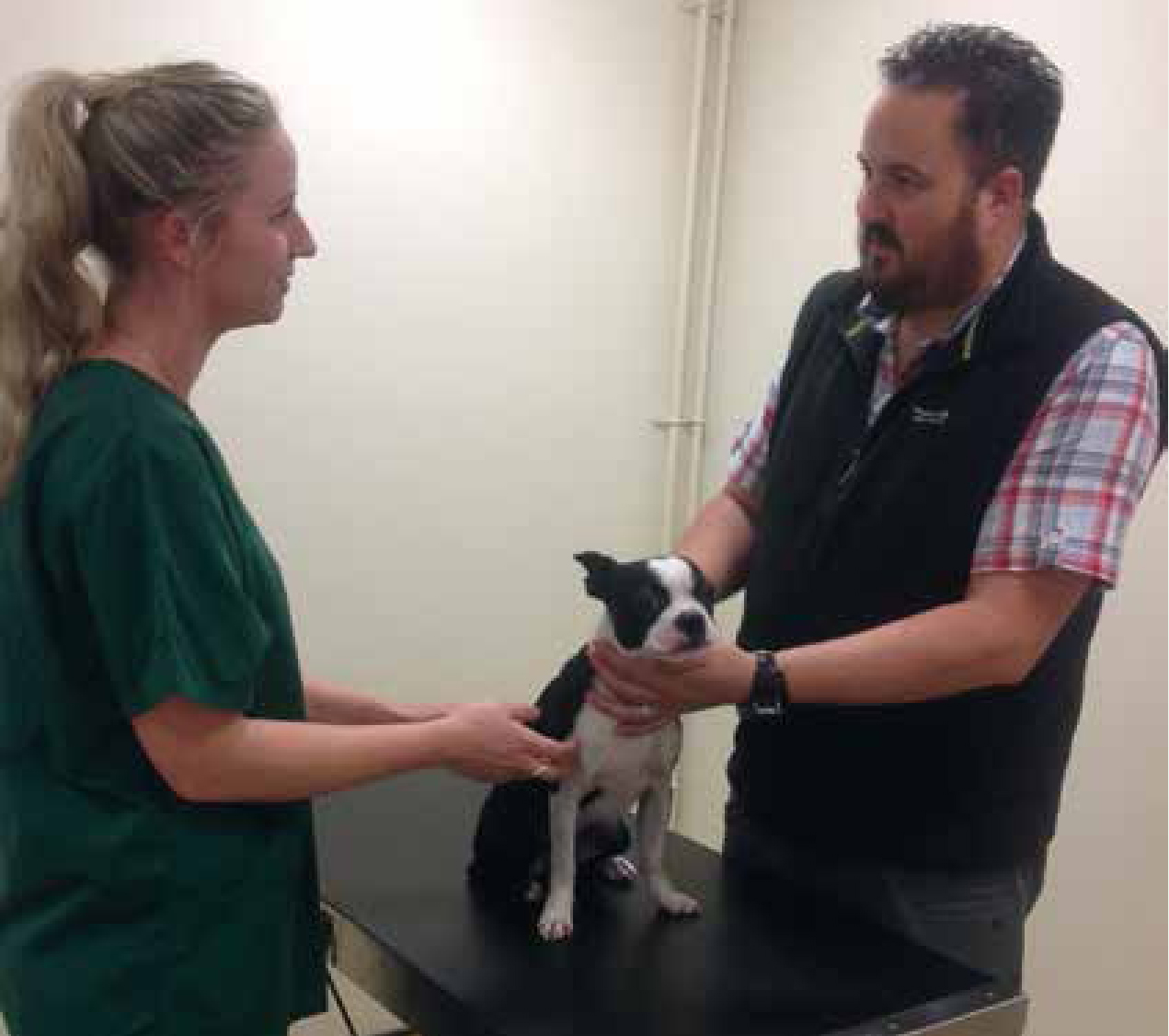Historically, developing the ‘compassionate character’ was the impetus for care, and gave the human nursing profession its ethos. In Florence Nightingale's opinion, the best nurses were good people who cultivated certain virtues or qualities in their character, one of which was compassion. Patients were expected to be the centre of all nurses' thoughts. Nurses were to be kind but never emotional, because they were caring for living people, compared with say plumbers or carpenters. Nightingale reiterated to probationer nurses that it was what was inside the nurse that counted, emphasising that the rest was only the outward shell or envelope (Nightingale, 1859). From Nightingale's time until the 1960s, numerous nurse writers championed similar ideas of care, with compassion being viewed as a quality associated with an individual's character. Compassion stems from virtue; it is about the intent and practised disposition of the nurse. It is nurtured in, and by, the culture and ethos of clinical practice (Bradshaw, 2011). Compassion is not strained by pressure or displaced by stress. Conversely, the greater the hardship, the more compassion is required.
Why does compassion matter?
Veterinary nurses want to be able to care for their patients with humanity and give patients the same kind of care they would want for their own companions. For many staff, such a desire may have been a strong motivating factor in their decision to enter the profession in the first place. Within the field of human nursing, compassionate care matters to patients. Anecdotally, it is the presence or absence of compassion that frequently marks the lasting and vivid memories patients and their loved ones retain about the overall experience of care provided by a healthcare facility (Cornwell and Goodrich, 2009) — something the reader will likely be able to relate to. Extrapolating from human nursing, it seems likely that such factors therefore matter greatly to the owners of treasured companion animals entrusted into the veterinary practice for care.
But compassionate care goes far deeper than influencing the memories of a patient or their loved ones. Epstein et al (2005) suggested that compassionate care can have a direct impact on health outcomes, stating that patients who were treated by a compassionate healthcare provider tended to share information about their symptoms and concerns more readily, which in turn yielded more accurate understanding and diagnoses. This is in congruence with Mannion (2014) who suggested that enhanced communication between a compassionate caregiver and a patient helps to build trust which results in more shared information about symptoms and concerns, resulting in enhanced understanding and a better adherence to treatment recommendations.
If such findings are extrapolated to the field of veterinary medicine, it seems prudent to suggest that compassionate care provided to the patients committed into the care of the veterinary practice, combined with a genuine empathy towards the concerns and needs of their owner, may ultimately facilitate the same benefits and help improve levels of client compliance.
Defining compassion
In order to consider the key elements of compassion in healthcare it is useful to have a clearer idea of what compassion is. One of the difficulties, however, in considering issues such as compassion, is that people will likely have their own personal, subjective definition. Mannion (2014) suggested compassion was a complex, contested and value laden concept fraught with rival interpretations and eluding a consensual definition. At this individual level compassion has variously been considered as an innate human quality, an evolutionary adaptation or an attitude of mind that can be acquired or taught (Chocinov, 2007). The teaching of compassion to nurses can again be linked to Florence Nightingale. Under her tutelage, character training became the moral compass for a nurse's actions. This is perhaps most evident in her well-known book, Notes on Nursing (Figure 1). This small but thought-provoking book, written in 19th century prose, has led many nurses to read and reflect on her ideas over the past 100 years. A key theme in Nightingale's beliefs about nursing was that it not signify merely ‘the administration of medicines and the application of poultices’ (p.6), but rather the knowledge of how to promote ‘health existences’ and the proper use of the environment to aid the ‘natural reparative processes’ (p.6). Using noise as an example, Nightingale wrote: ‘Unnecessary noise then is the most cruel absence of care, which can be inflicted on either sick or well…A nurse who rustles is the horror of a patient, though perhaps he does not know why. The fidget of silk and of crinoline, the rattling of keys and shoes, will do a patient more harm than all the medicines in the world will do him good’ (p.27).

Nightingale's writings are filled with details of patient care illustrated with precision, from the value of being able to see out of a window instead of looking against a dead wall to the role and position of laundries or the comfort and composition of mattresses. It is the author's opinion that veterinary nurses can read Nightingale as a credo for compassion today. She recognised that systems were needed to foster and institutionalise compassion and that small touches and details mattered. This is in congruence with Cornwell and Goodrich (2009) who stated that it was the ‘little things’ that patients or carers often recall as having been either present or lacking in their experiences of care.
Chocinov (2007) defined compassion, in simple terms, as a deep awareness of the suffering of another, coupled with the wish to relieve it, requiring staff to give something of themselves. Ways in which this can be achieved, as defined in relation to health care and adapted to fit within the context of veterinary practice are listed in Box 1.

What prevents compassionate care?
Why, when veterinary nurses have entered the profession with high ideals, abundant stories of compassion and a strong motivation to treat patients as they would wish their own companions to be treated, do lapses in compassionate nursing care occur?
A lack of compassion, empathy or indifference to the suffering of others has been attributed to a number of factors notably the normal human defences and fears associated with having to cope with the routine of being frequently exposed to pain, distress and death.
While it is tempting to blame poor practice and a lack of compassion on an individual who ‘fails to cope’ with the nature of the job, it is well documented within human nursing literature that organisational and cultural context can make an important difference in how care is delivered and received (Cornwell and Goodrich, 2009; Mannion, 2014; Mills et al, 2015). The reasons for this may vary from the ability of personnel to demonstrate compassion for their patients or clients due to inadequate staffing levels and hence the amount of time they have available, to the priority given towards compassionate nursing care influenced by the values, strategic priorities and leadership style of the senior management team within the practice. It is reported within the field of human nursing that deficiencies in basic care arise in part as an emergent outcome of a complex system where typically well-intentioned and competent staff interact in unsupportive organisational environments (Mannion, 2014). Empirical evidence from veterinary practice would suggest the situation is reflected for some veterinary nurses.
Enabling compassionate care
Statistically, veterinary personnel are reported as a high risk group for experiencing stress and burnout (Figley and Roop, 2006) as personnel experience regular, frequent or in some cases continuous exposure to animals and their owners in varying states of pain and distress. Such stress and burn out is now commonly referred to as compassion fatigue. Compassion fatigue is the final result of a progressive and cumulative process that is caused by prolonged, continuous, and intense contact with patients, the use of self, and exposure to stress. It evolves from a state of compassion discomfort, which if not effaced through adequate rest, leads to compassion stress that exceeds nurses' endurance levels (Coetzee and Klopper, 2010). Compassion fatigue is a state where the compassionate energy that is expended by nurses has surpassed their restorative processes, with recovery power being lost. All these states according to Coetzee and Klopper (2010) manifest with marked physical, social, emotional, spiritual, and intellectual changes that increase in intensity with each progressive state.
Huggard and Huggard (2008) suggested a three-pronged approach is necessary to help manage compassion fatigue amongst staff. First, an organisational responsibility to care for staff, second, an obligation amongst peers to support colleagues, and finally, a personal responsibility to care for oneself. With regards to an organisational approach to care, staff in senior positions can enable compassion among staff by modelling compassionate behaviours — towards themselves, other staff, patients and clients — often through relatively simple gestures which may include encouraging a colleague to take a rest break or by taking one themselves! Modelling compassionate behaviour is crucial in the message it sends to staff at all levels; however it is especially important when students are in the practice to observe and learn. Training and observation by learners in settings where displays of emotion are treated as a failure to maintain an appropriate professional distance and where compassionate care is positioned as ‘soft and fluffy’ may have a detrimental impact on interpersonal relationships between staff, patients and clients and on the quality of future care delivered (Cornwell and Goodrich, 2009).
In terms of collegial support, providing staff with a forum for open and honest dialogue about their experiences of delivering care is important. Cornwell and Goodrich (2009) advocated a safe and recrimination-free environment in which to discuss the everyday challenges, pressures and frustrations of the job was essential to encourage communication within a team and to improve team dynamics. It is important that staff know that they are not alone — they have the names of trusted colleagues they can call on for guidance and support.
On an individual level, a useful way of mitigating the effects of compassion fatigue is to personally find ways to leave the professional role at work at the end of each day (Huggard and Huggard, 2008). The role of a veterinary nurse is complex, demanding and frequently emotional. Finding ways to acknowledge the emotional burden, and then leave it behind is crucial to personal wellbeing. Strategies that actively encourage disengaging from the working day are listed in Box 2.

Conclusion
Within the field of human nursing there is an emerging view that compassion is under threat within the high volume, high risk world of modern health care and it seems likely that this situation may in part be replicated within some veterinary practices. However, compassion is a varied and complex phenomenon and what it means to be compassionate can be defined and interpreted in a number of ways. Crucially though, compassionate care does not occur in a vacuum and organisational context is pertinent in shaping and mediating how care is delivered, experienced and received (Mannion, 2014). Compassion must not be viewed as just a concern for frontline staff at the sharp end of care delivery. Mannion (2014) stated compassion was something that was accomplished and reproduced at all levels of the organisation, from ‘bedside to board’.
In order for the suggestions outlined in this article to make an impact, staff must be aware of what is valued within their organisation and they themselves feel valued in their role. This may be achieved by management providing regular feedback to staff on their performance and providing recognition when they deliver compassionate care. The sharing of patient success stories or dialogue from clients regarding their first-hand experiences of care provided should be used to review and reflect on the standard of care provided. Such reflection may help alleviate stress, counter poor organisational morale, and most importantly, empower staff to remember that compassion is at the very core of their nursing practice.

